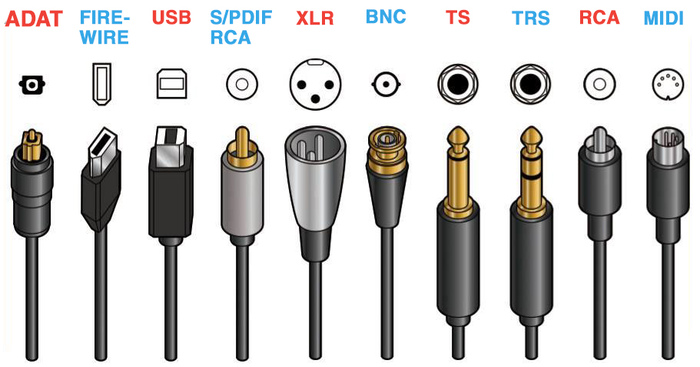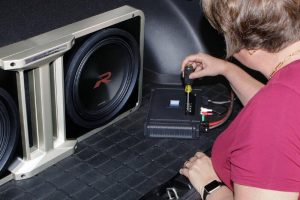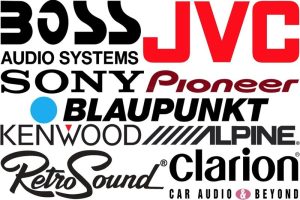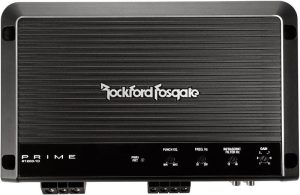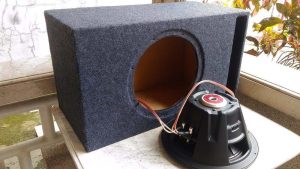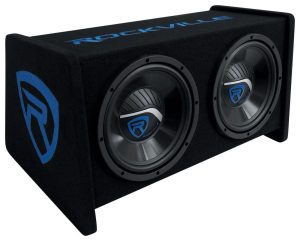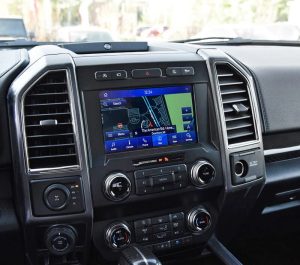Driving with your favorite tunes blasting through the car’s speakers transforms any journey into an enjoyable experience. But to achieve that crisp, clear sound, you need the right stereo connectors. These small yet vital components bridge your devices and car audio system, ensuring flawless music playback. Let’s dive into the world of car stereo connectors, exploring their types, uses, and tips for choosing the best one for your vehicle. Whether you’re upgrading your system or troubleshooting connectivity issues, this guide simplifies the process with practical insights.
Contents
- Why Stereo Connectors Matter in Your Car
- 3.5mm Auxiliary Cable: The Classic Choice
- USB Cable: Power and Audio in One
- Bluetooth: The Wireless Revolution
- RCA Connectors: The Pro Audio Choice
- ISO Connectors: The Wiring Harness Standard
- CD Changer Cable: A Blast from the Past
- Other Notable Connectors
- How to Choose the Right Stereo Connector
- Installation Tips for Stereo Connectors
- Top Brands for Stereo Connectors
- Common Connector Issues and Fixes
- The Future of Car Stereo Connectors
- Final Thoughts
Why Stereo Connectors Matter in Your Car
Car stereo connectors act as the backbone of your audio setup. They link your smartphone, MP3 player, or other devices to the car’s head unit, delivering sound to your speakers. A poor-quality or mismatched connector can lead to static, weak signals, or no sound at all. By choosing the right connector, you ensure high-quality audio, seamless device integration, and a hassle-free installation. With technology evolving, modern connectors also support advanced features like hands-free calling and music streaming, making them essential for today’s drivers.
Let’s explore the most common types of stereo connectors you’ll encounter in cars. Each serves a unique purpose, so understanding their strengths helps you make an informed choice.
3.5mm Auxiliary Cable: The Classic Choice
The 3.5mm auxiliary cable, often called a headphone jack, remains a staple in car audio systems. This versatile connector plugs into your device’s headphone port and the car’s auxiliary input, transmitting audio directly to the stereo. Most modern vehicles come equipped with a built-in aux port, while older models may require an adapter.
Benefits of the 3.5mm Aux Cable
- Universal Compatibility: Works with nearly all smartphones, tablets, and MP3 players.
- Affordable: Inexpensive and widely available at electronics stores.
- Simple Setup: Plug-and-play design requires no technical expertise.
Drawbacks to Consider
- Wired Connection: Limits device mobility, as you’re tethered to the stereo.
- Durability Issues: Cables can fray or wear out with frequent use.
- No Charging: Unlike USB, it doesn’t charge your device while connected.
For casual listeners who prioritize simplicity, the 3.5mm aux cable delivers reliable performance. Keep a high-quality cable with gold-plated connectors to minimize signal loss and enhance sound clarity.
USB Cable: Power and Audio in One
USB cables have become increasingly popular in car audio systems. These connectors link your device to the car’s USB port, allowing music playback and, in many cases, simultaneous charging. Many vehicles now feature USB ports as standard, making this a convenient option for tech-savvy drivers.
Why Choose a USB Cable?
- Dual Functionality: Streams music while charging your device.
- High-Quality Audio: Digital signals reduce interference for cleaner sound.
- Device Integration: Supports Apple CarPlay and Android Auto in compatible systems.
Potential Limitations
- Compatibility Issues: Not all devices or stereos support USB audio playback.
- Cable Quality: Cheap cables may cause connectivity problems or slow charging.
- Port Availability: Older cars may lack USB ports, requiring adapters.
USB cables shine for drivers who want a single solution for audio and power. Opt for a certified cable (like USB-C or Lightning) to ensure compatibility with your device and car stereo. If your vehicle lacks a USB port, consider a USB-to-aux adapter for similar functionality.
Bluetooth: The Wireless Revolution
Bluetooth technology has transformed car audio by eliminating the need for cables. This wireless connector pairs your device with the car stereo, streaming music, podcasts, or calls directly to your speakers. Many new vehicles include built-in Bluetooth, while older models can use Bluetooth adapters.
Advantages of Bluetooth
- Cable-Free Convenience: Move freely without being tied to the stereo.
- Versatile Features: Supports hands-free calling, voice commands, and music streaming.
- Easy Pairing: Connects quickly with most modern devices.
Challenges to Watch For
- Sound Quality: Slightly lower audio fidelity compared to wired connections.
- Battery Drain: Continuous use may deplete your device’s battery.
- Interference: Nearby devices or signals can disrupt connectivity.
Bluetooth is ideal for drivers who value flexibility and modern features. To maximize performance, choose a car stereo with advanced Bluetooth codecs like aptX for better sound quality. For older vehicles, a Bluetooth receiver plugged into the aux port offers a budget-friendly upgrade.
RCA Connectors: The Pro Audio Choice
RCA connectors, recognizable by their red and white (or black) plugs, are common in high-end car audio systems. These cables connect amplifiers, subwoofers, or external processors to the head unit, delivering robust audio signals for enhanced sound.
Why RCA Stands Out
- Superior Sound: Designed for low-noise, high-fidelity audio transmission.
- Flexible Setup: Supports complex systems with multiple components.
- Durable Design: Built to handle the demands of car environments.
Things to Keep in Mind
- Complex Installation: Requires more wiring knowledge than aux or USB.
- Limited Device Support: Not suitable for direct smartphone connections.
- Cost: Higher-quality RCA cables can be expensive.
RCA connectors suit audiophiles building custom audio systems with amplifiers or subwoofers. Invest in shielded RCA cables to prevent interference and ensure crisp, powerful sound.
ISO Connectors: The Wiring Harness Standard
ISO connectors are the go-to for connecting aftermarket stereos to a car’s wiring harness. These standardized plugs link the head unit to the vehicle’s electrical system, powering the stereo and speakers. Most modern vehicles use ISO connectors, simplifying aftermarket installations.
Benefits of ISO Connectors
- Plug-and-Play: Streamlines stereo installation without cutting wires.
- Wide Compatibility: Works with most aftermarket head units.
- Reliable Connection: Ensures stable power and audio signals.
Potential Drawbacks
- Vehicle-Specific Adapters: Some cars require additional harness adapters.
- Installation Knowledge: May need professional help for complex setups.
- Cost of Adapters: Extra adapters can add to the overall expense.
ISO connectors are essential for anyone upgrading their car stereo. Check your vehicle’s make, model, and year to find the right ISO harness adapter, and consider professional installation for a seamless fit.
CD Changer Cable: A Blast from the Past
CD changer cables were once common in older vehicles equipped with multi-disc CD players. These specialized connectors linked the CD changer to the car stereo, allowing drivers to switch between discs without manual swapping. While digital music has largely replaced CDs, some vintage cars still use these cables.
Why CD Changer Cables Persist
- Nostalgic Appeal: Perfect for classic car enthusiasts preserving original systems.
- Reliable Performance: Delivers consistent audio for CD playback.
- Specialized Use: Supports legacy audio setups in older vehicles.
Limitations to Consider
- Obsolete Technology: Rarely found in modern cars or devices.
- Limited Functionality: Doesn’t support streaming or modern media.
- Availability: Hard to find, as production has dwindled.
CD changer cables are a niche option for retro car audio systems. If you’re restoring a classic vehicle, source these cables from specialty retailers or online marketplaces like eBay.
Other Notable Connectors
Beyond the main types, several other connectors play roles in car audio systems. These include:
- 1/4-Inch Phone Connectors: Used for tweeters and woofers in high-end setups, delivering clear high or low-frequency sounds.
- Binding Posts and Banana Plugs: Found in premium audio systems for secure, high-quality connections.
- XLR Connectors: Rare in cars but used in professional-grade systems for superior audio fidelity.
- Crimp Connectors: Secure wiring for speakers or amplifiers, preventing shorts and ensuring solid electrical flow.
Each connector serves a specific purpose, so match them to your system’s components and goals. For example, crimp connectors are vital for custom installations, while XLR suits advanced setups.
How to Choose the Right Stereo Connector
Selecting the perfect connector depends on your car, devices, and audio preferences. Follow these steps to make the right choice:
- Check Your Car’s Audio System: Identify available ports (aux, USB, Bluetooth) and the stereo’s make and model. Refer to your vehicle’s manual for details.
- Assess Your Devices: Ensure the connector supports your smartphone, MP3 player, or other media sources. For instance, iPhones may need Lightning-to-USB adapters.
- Consider Sound Quality: Prioritize connectors like RCA or USB for high-fidelity audio if you’re an audiophile.
- Evaluate Ease of Use: Choose plug-and-play options like aux or Bluetooth for simplicity, or ISO for aftermarket upgrades.
- Plan for Future Needs: Opt for versatile connectors like USB or Bluetooth to accommodate new devices or features.
- Set a Budget: Balance cost and quality. High-end cables improve performance but may not be necessary for casual listening.
For complex installations, consult a professional installer. They can recommend connectors and ensure compatibility with your vehicle’s wiring and audio components.
Installation Tips for Stereo Connectors
Proper installation maximizes connector performance and longevity. Keep these tips in mind:
- Use Quality Cables: Invest in shielded or gold-plated connectors to reduce interference and improve durability.
- Secure Connections: Ensure plugs fit snugly to prevent loose connections or signal loss.
- Check Wiring: For ISO or crimp connectors, verify correct wire matching (e.g., red for positive, black for negative) to avoid shorts.
- Test Before Finalizing: Play audio through the system to confirm functionality before securing cables.
- Protect Cables: Route cables away from moving parts or heat sources to prevent damage.
If you’re new to car audio, watch tutorials on YouTube or consult resources like Crutchfield for step-by-step guidance. Professional installation, costing $50-$200, guarantees optimal results for intricate setups.
Top Brands for Stereo Connectors
Reliable brands deliver durable, high-performing connectors. Consider these trusted names:
- Metra: Known for ISO harnesses and wiring adapters tailored to specific vehicles.
- Scosche: Offers a wide range of aux, USB, and Bluetooth adapters for easy integration.
- Kicker: Specializes in RCA cables and crimp connectors for high-quality audio.
- Belkin: Produces dependable USB and aux cables with strong compatibility.
- Anker: Delivers affordable, durable USB and Bluetooth adapters for modern devices.
Shop at retailers like Amazon, AutoZone, or Sonic Electronix for a wide selection and customer reviews to guide your purchase.
Common Connector Issues and Fixes
Even the best connectors can face issues. Here’s how to troubleshoot common problems:
- No Sound: Check for loose plugs, damaged cables, or incorrect input settings on the stereo.
- Static or Interference: Replace low-quality cables or use shielded connectors to reduce noise.
- Bluetooth Pairing Fails: Reset the Bluetooth device, update firmware, or move closer to the stereo.
- USB Not Recognized: Try a different cable or port, and ensure the device is unlocked.
- Worn-Out Cables: Replace frayed or bent cables to restore performance.
Regular maintenance, like cleaning ports and storing cables properly, prevents many issues. If problems persist, consult a car audio specialist.
The Future of Car Stereo Connectors
Car audio technology continues to evolve, and connectors are keeping pace. Emerging trends include:
- Wireless Advancements: Next-gen Bluetooth and Wi-Fi protocols promise faster, higher-quality audio streaming.
- USB-C Dominance: USB-C ports are becoming standard, offering faster data transfer and universal compatibility.
- Smart Integration: Connectors supporting AI-driven features, like voice assistants, enhance driver convenience.
- Eco-Friendly Materials: Sustainable cables reduce environmental impact without sacrificing performance.
Stay ahead by choosing connectors compatible with future standards, ensuring your audio system remains cutting-edge.
Final Thoughts
Car stereo connectors may seem like small components, but they play a massive role in delivering the audio experience you crave. From the trusty 3.5mm aux cable to wireless Bluetooth and robust RCA connectors, each type offers unique benefits tailored to different needs. By understanding your car’s audio system, device compatibility, and sound goals, you can select the perfect connector for seamless music playback. Invest in quality cables, follow proper installation practices, and troubleshoot issues promptly to keep your system performing at its best.
Ready to upgrade your car audio? Explore connectors from top brands and consult fit guides to find the right match for your vehicle. With the right setup, every drive becomes a concert on wheels.
